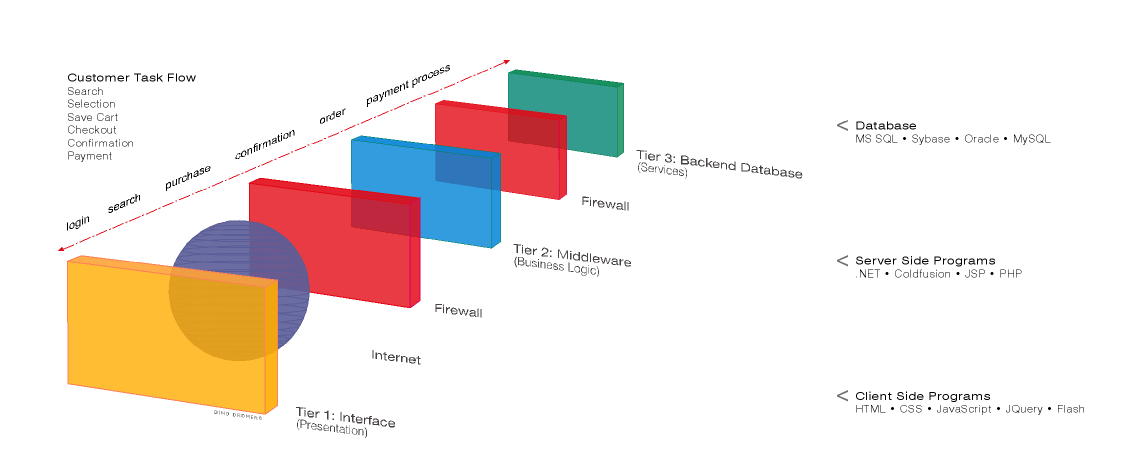3 Tier Architecture
Good Web designers have a working knowledge of the 3 Tier Architecture (known as the n-Tier Architecture). Any Web expert (specialist) who has a personal (hands on) experience in all three components of the 3 Tier Architecture can be a great access in providing additional solutions to your company Website, creating something more than a static brochure Website.
What is a 3 Tier Architecture?
According to the book, “Usability for the Web”, the 3 Tier Architecture is,
A systematic divide and conquer approach can be applied to the software development portion of the website production process by dividing the problem into discrete parts and addressing their respective development issues separately. One paradigm for doing this is to decompose the system architecture into three tiers, or layers (see sample above). This approach, referred to as a 3 Tier (or, more generally, n-Tier) architecture (see White et al. 1998: Sadtler et al. 2000), divides the architecture into the following tiers:Tier 1. Presentation Tier: Includes the user interface, typically a Web browser.
Tier 2. Business Logic Tier: Includes the Web server and any server-side programs that run under it, such as CGIs or Java Servlets.
Tier 3. Services Tier: Includes legacy systems, databases, and other back-end services.
Or from the book, “The Art & Science of Web Design”,
Interface: This refers to the HTML code that gets sent to your users’ browsers.
Middleware: A server-based application that processes requests for pages and provides a scripting language for writing templates. Some popular middle-ware packages include Microsoft Active Server Pages (ASP), Allaire’s Cold Fusion, and the open source PHP...
Backend Database: This is where the content is stored. Some popular databases include Microsoft SQL Server, Oracle, Sybase, and the open source MySQL.
